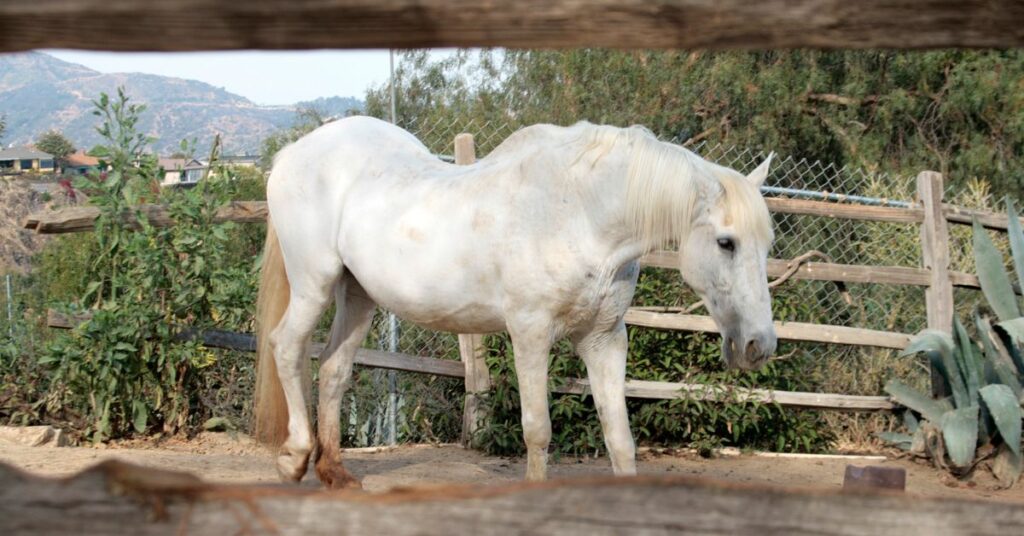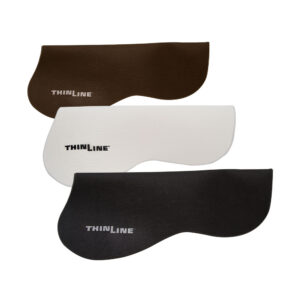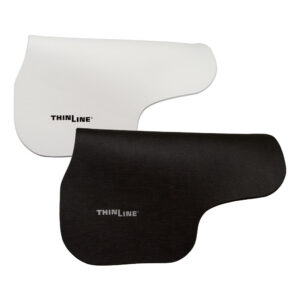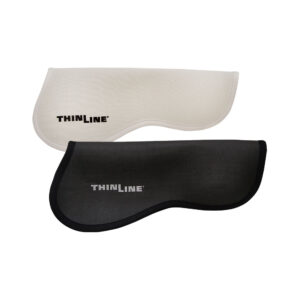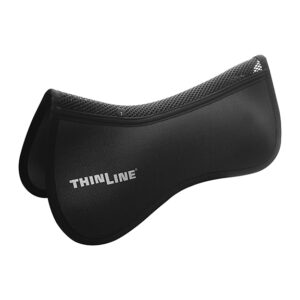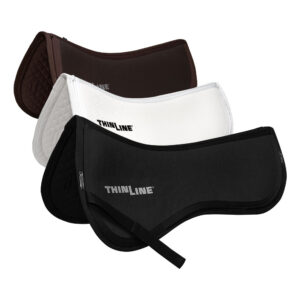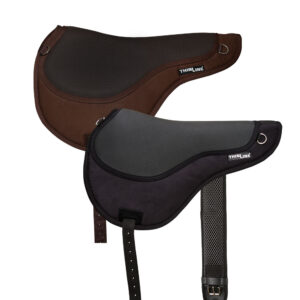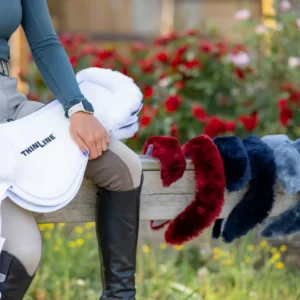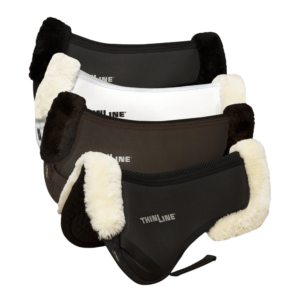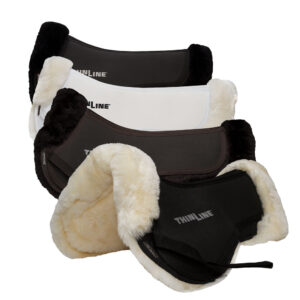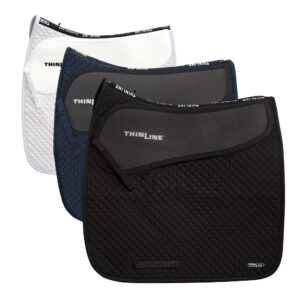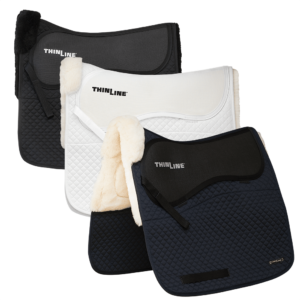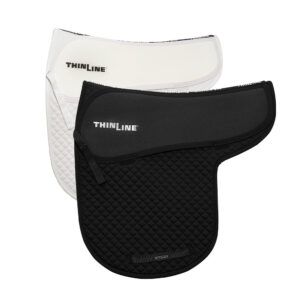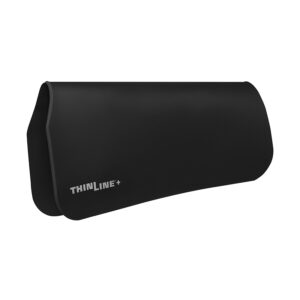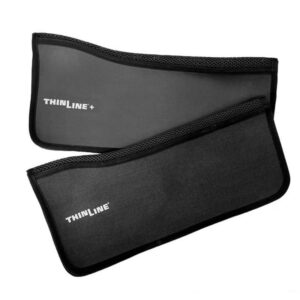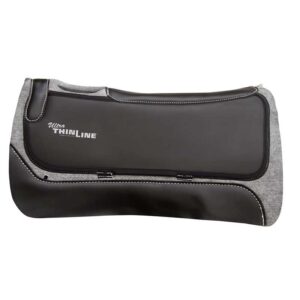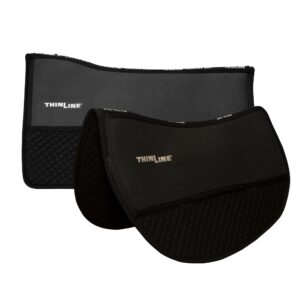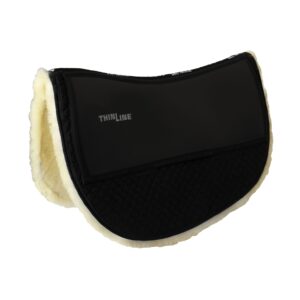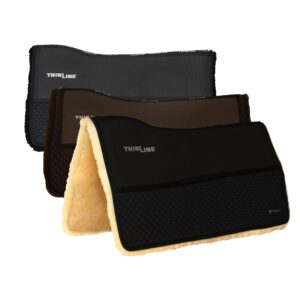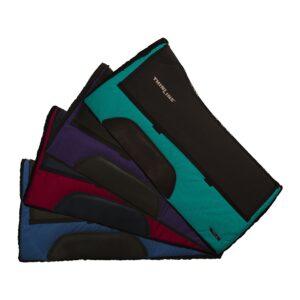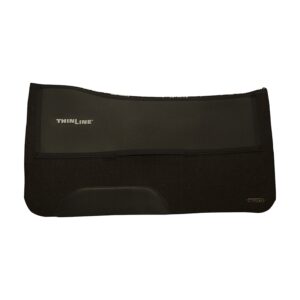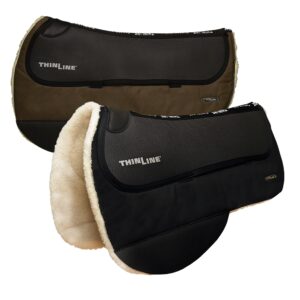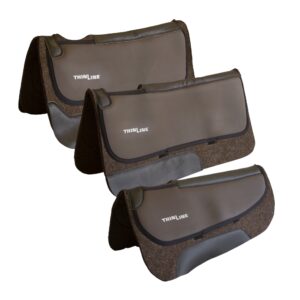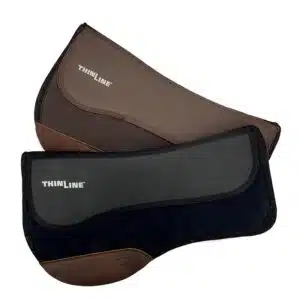Saddle Bridging? The cause?
Saddle Bridging is a common problem with horses. Generally the horses’ back dips in the center of the top line. Sometimes addressed as Sway Back. This can be caused by poor saddle fit but plenty other causes create sway backs. Proper muscle development is key to reversing hollow horses.
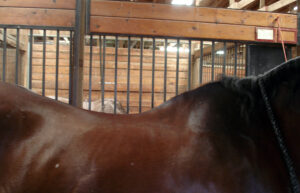
Most sway backs are not congenital. The sway is the result of lack of muscle across the top line, correctly building muscle will solve the problem!
Proper Saddle fit is critical to encourage horses to lift their back. A saddle that bridges is often what creates the sway back.
Conformation also plays a role. Horses with long backs are prone to back problems in general. Horses with high-set necks are at greater risk as they are pre-disposed to hollow their back while working. A more detailed article on Sway Back Horses you can find here!
Saddle Bridging and Soreness
A swayback can cause soreness because most saddles will “bridge,” putting the rider’s weight on the front and the back of the saddle, creating abnormal pressure points, especially over the shoulders and loins. Poor saddle fit can contribute to swayback, as the horse will alter its stride and movement, including hollowing its back, and raising its head to avoid pain.
Poor fitting saddles exasperate the problem preventing proper muscle development.
And now the fix!
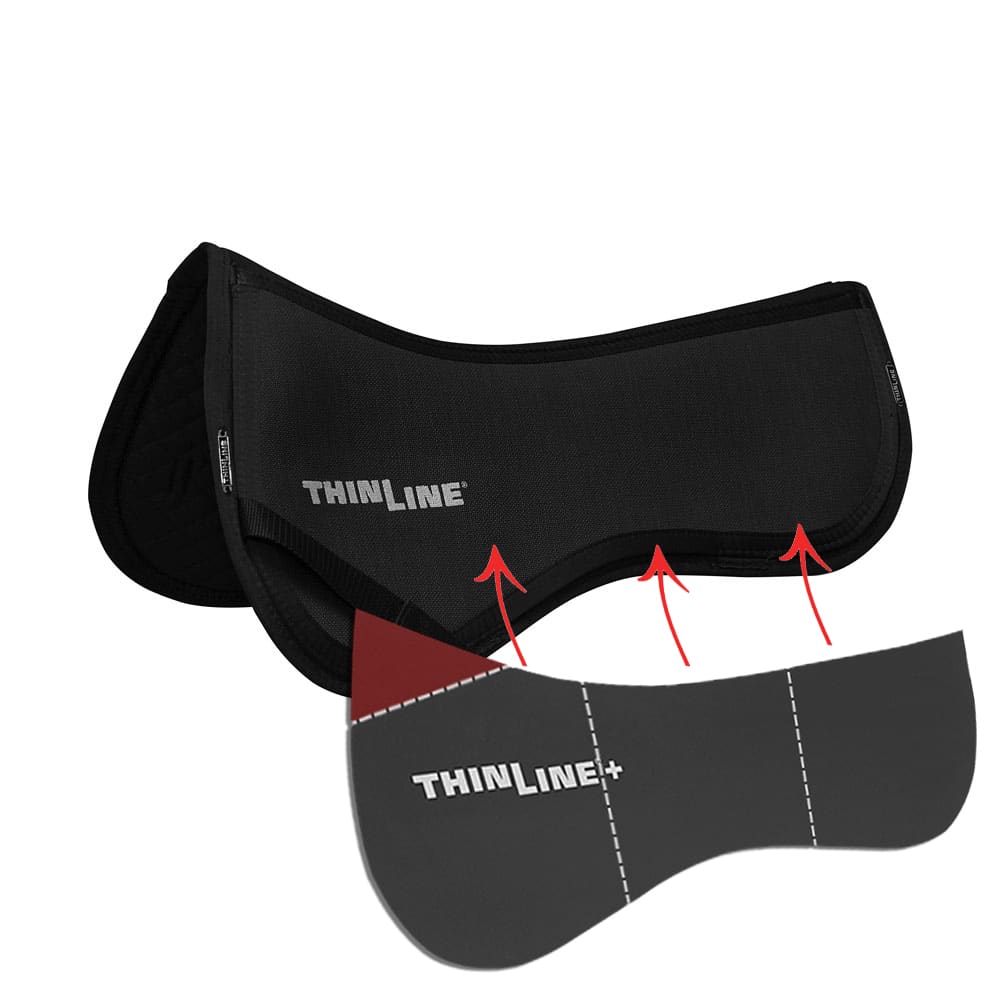
To fix bridging saddles use a shimmable pad with bridging shims inserted to “fill in” the gap. All Cotton ThinLine Pads have pockets to put fitting shims inside! Allowing for even contact of the saddle panels. Using fitting shims will allow the horse to move more comfortably so the muscles can be developed and the shims can eventually be removed.
- ThinLine has several thicknesses of shims and they may be stacked so riders can remove a layer at a time when the horses back begins to strengthen and lift.
- Master Saddle Fitters rely on ThinLine shimmable pads and fitting shims to alleviate problems with swayback. We have created the perfect self-cuttable shims to exactly solve the bridging in the saddle.
A good saddle fit, for a horse with a swayback or not, will equal a safe, relaxing ride. Your horse will be well-behaved, stay healthy, and enjoy himself. Your riding skills will be enhanced and improved.
You don’t have to be an expert to tell if you saddle does not fit but it is advisable to have a professional check. If you’re certain you have a saddle with the correct gullet size for your horse, paying attention to how your horse acts and how your body feels will let you know if you have the right fit.
Watch Out with Saddle Bridging Shims!
Over shimming with bridging shims can actually cause the horse to move away from the pressure. Your saddle will rock forward and backward if you over shim. Start thin, you may always return shims for the next thickest size. The best method is to use several very thin shims, stack them and then remove them layer by layer as your horse develops muscle tone.
ThinLine offers all our customers a money back guarantee your saddle will fit better. Pads with ThinLine sewn onto cotton, sheepskin, felt, … have a pocket opening to add shims. Shims are available for every combo pad.
How to tell if you may have poor saddle fit?
- Saddle Sores: caused by friction (movement of the saddle) . Girth and/or saddle shift and begin to rub the horse. Use a Non slip product (ThinLine)
- White Hairs: too much pressure in a small spot. The pressure stops blood flow, kills the sweat gland and causes hair to turn white. You need a product that distributes pressure over a larger area (ThinLine).
- Dry Spots: after you ride the horses back should be evenly wet where the saddle lies. Dry spots suggest there is either too much pressure in one spot.
- Muscle Atrophy: It is critical you shim with a product which will make the horse more comfortable. Do not use foams which squish (compress) –
- Bridging: the panels at the center of the saddle have less contact than the wither and the cantle area. Be careful what you use to fill and do not add too much at once. ThinLine offers bridging shims in several thicknesses. Start slowly and add a few shims at a time.





